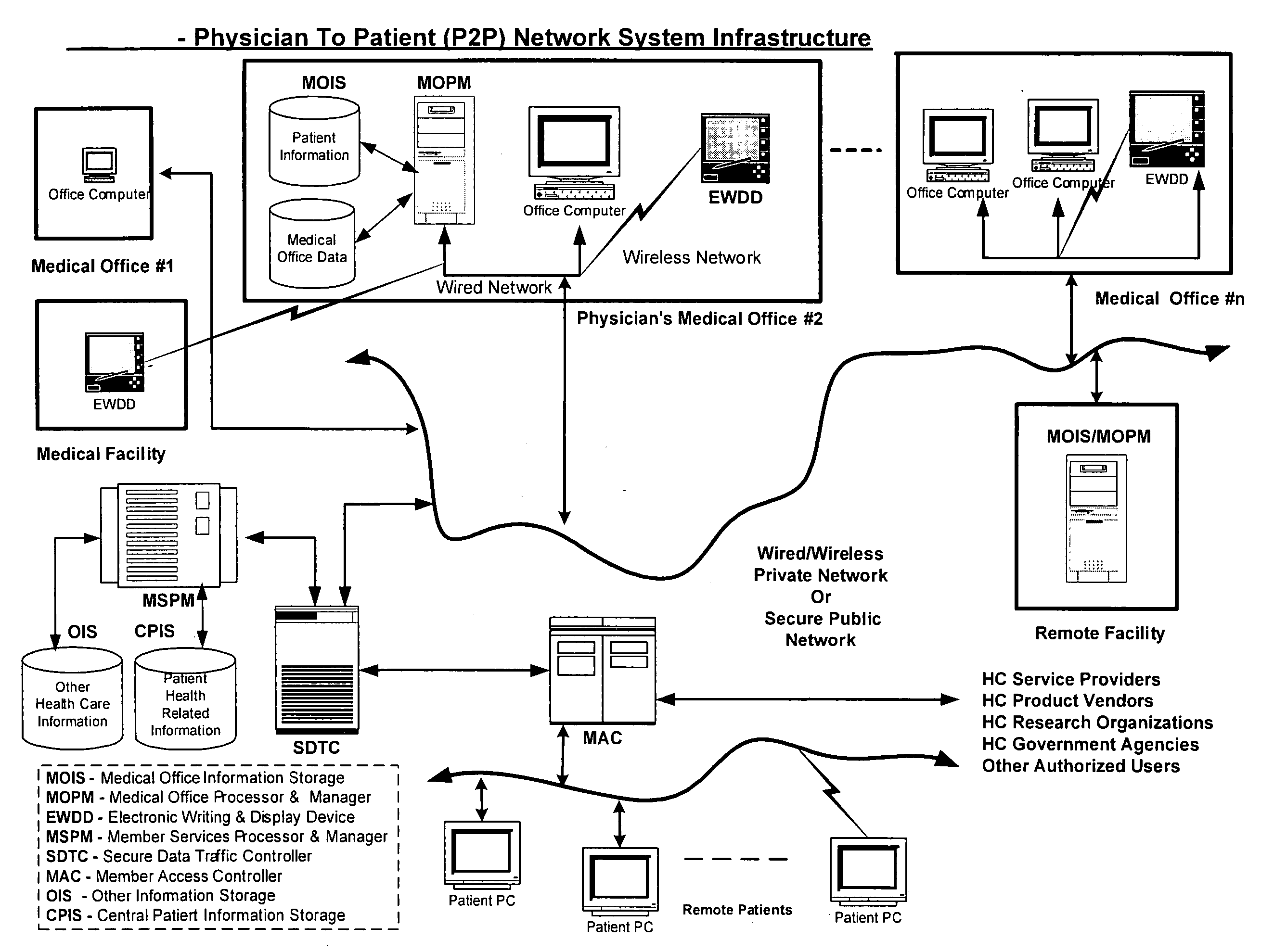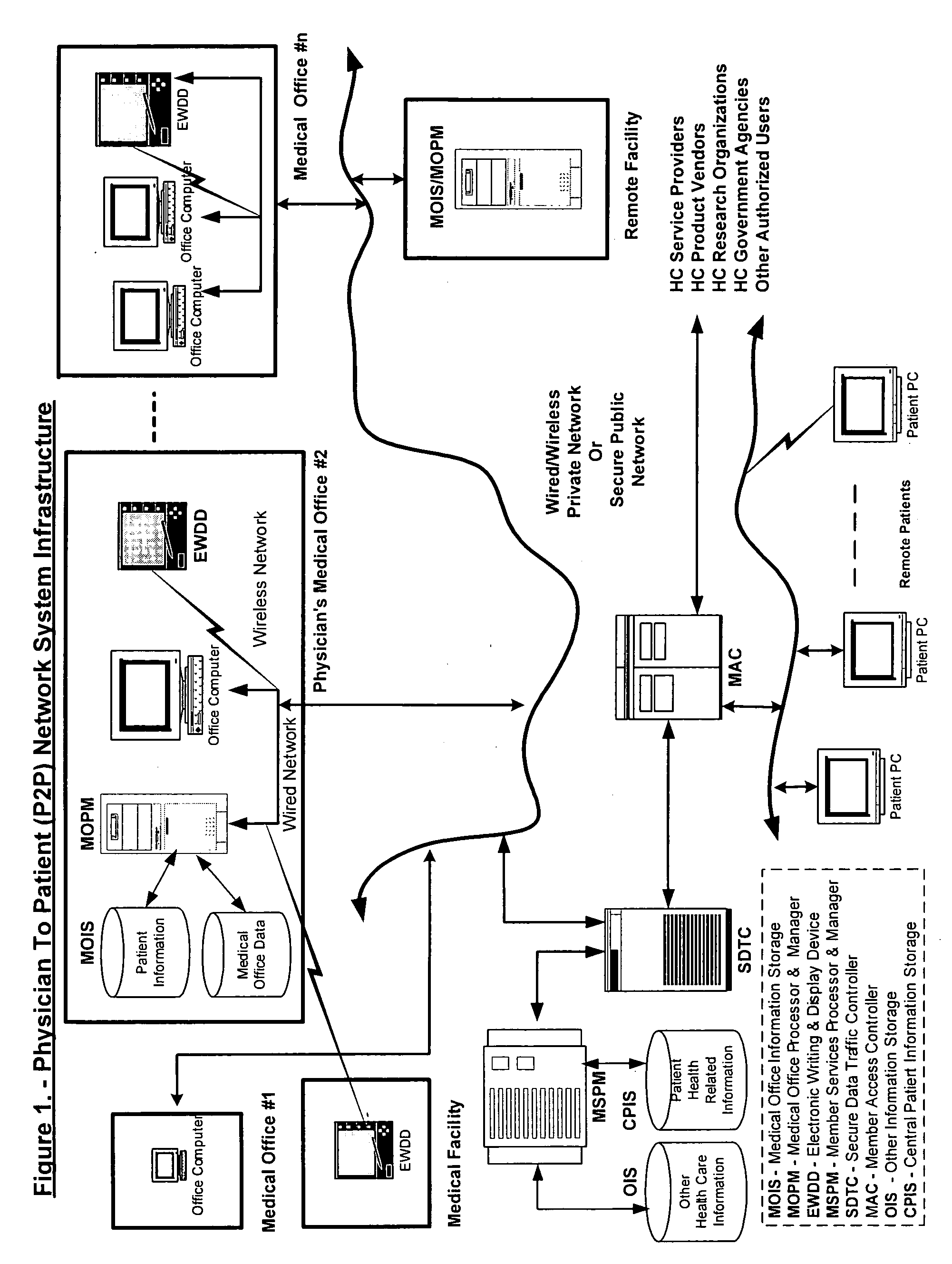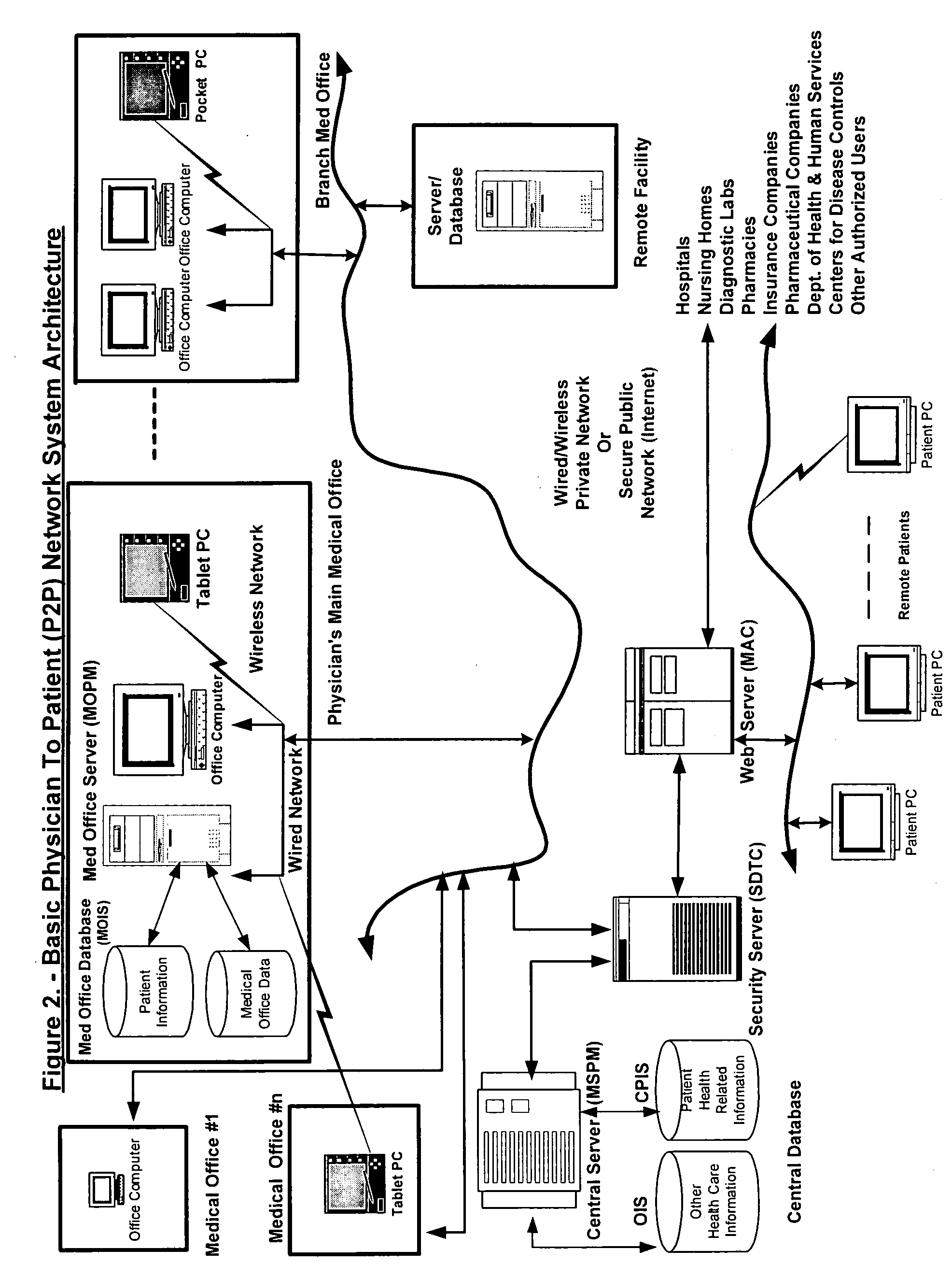During last decade, continually rising cost of the healthcare industry has affected everybody in the country.
The malpractice insurance premiums have skyrocketed, while the payments to physicians by insurance companies have continually declined.
The cost of drugs is increasing every year.
Every HC
service provider (physicians, hospitals,
nursing homes, diagnostic labs etc.) is a victim of the rising cost.
But it is the patient who is suffering from the rising cost and
poor quality of services.
The root causes of HC industry's cost-quality problems are diverse and complex.
While some problems are caused by high cost of implementing the
Information Technology (IT) solutions, others are deeply embedded in the infrastructure of the U.S. healthcare industry.
The patient does not have the power that a customer enjoys in any market driven industry.
Unlike a customer who has the freedom to evaluate and select a product of his choice, the patient choices are restricted.
Another major flaw in the system currently used in US is that all physicians receive the same amount of
payment for a
medical procedure irrespective of their level of experience.
The reduction in
payment to physicians (by Medicare, Medicaid and all other insurance companies), and lack of compensation for physician's experience level translates into lower
quality of service to the patients.
Unfortunately, majority of patients are not even aware of these problems.
This environment results in poor physician-patient relationship.
The biggest legal flaw in the US healthcare industry is lack of having a cap on malpractice lawsuits, and a cap on the percentage (of pay-out) given to the attorney representing the patient.
This flaw alone has resulted in ever increasing malpractice insurance premiums of physicians.
Unfortunately, the laws are made / changed by the government body that consists of (almost) 100% attorneys.
The main reasons for physicians not adopting IT solutions (currently available in the market) are the high
initial cost and inefficient methods of creating Electronic Medical Records (EMRs).
Majority of physicians, today, are still using basic billing
software to create insurance claims, and create medical records using paper and pen, which results in high overhead cost.
The methods of communication and transfer of information among independently practicing physicians, patients, HC product / service providers, and other healthcare user groups are slow and inefficient.
These manually conducted operations, rising labor cost, shortage of skilled HC workers, and
high turnover of employees have resulted in ever-rising overhead cost of HC services, while the quality of services to patients is deteriorating.
There are many factors that contribute to the higher overhead cost of HC service providers.
A basic cause of the high cost problem is the recording, storage & transfer of
patient information on papers.
All of these operations are very labor intensive, inefficient, and costly.
All of these overhead operations are conducted manually, contributing to the 50% overhead cost.
However, lacking the
typing skill, majority of physicians have not been able to use them effectively.
Since the computer systems (including the Operating Systems) were evolving themselves, the IT industry was unable to create national / global standards.
With the result, most of the HC organizations have computer systems that are not interoperable with each other.
This incompatibility (non-
interoperability) is prohibiting electronic transfer and sharing of healthcare information.
The paper records and the incompatible computer systems are the major hurdles for
electronic data transfer among various HC service providers.
The manually conducted operations to transfer
patient information are inefficient and labor intensive, contributing to the higher overhead cost.
Unless a network is created to link these small medical offices with each other, and HC information is transferred electronically, the US healthcare industry's cost-quality problem will not be solved.
This redundant storage of patient records contributes significantly towards the high overhead cost of healthcare industry.
Since the labor cost of medical workers is increasing every year, the overhead cost would also increase.
In a complex case, however, it requires further diagnosis.
With the current state of the medical office
business process, the overhead cost of providing healthcare services to the patients is very high, medical offices are not operating efficiently, and the quality of services to the patient is poor.
But the physicians are very busy during the day.
At the end of the day, it is likely that a physician may not remember which
drug belongs to which representative /
drug manufacturer.
These highly paid marketing employees have to continually struggle to get physicians' attention, and stay in front of them.
The labor cost of the marketing staff is a major factor adding to the cost of HC product suppliers.
The pharmacies have to add a significant mark-up (up to 300%) to the original cost of the drugs due to their own cost of sales.
With the result, the patients end up paying much higher prices for the HC products.
But, these pharmacies are not considered reliable (and some are illegal), since the drugs are sold to the patient without recommendation / approval of his own physician.
1) The patient has limited choices in selecting an insurance policy, since it is the employer of the patient who makes the selection of insurance company and policies.
Most patients cannot afford to buy an insurance policy as an individual, since the premiums are very high for individuals (compared to the group rates for employers).
2) The quality of services offered by physicians at
Health Maintenance Organizations (HMOs) is very poor.
Since the physicians are employees of the organization, or they get a flat monthly fee per patient from the insurance company, they don't have much incentive to provide better quality service.
This is the
root cause why most of the HMOs in the US have failed during last decade.
If a patient wants to get treatment from a non-participating physician, his cost is higher.
4) A patient has no means available to compare the credentials and experience of even participating physicians, as the only information provided by the insurance companies is the name, address and phone numbers of the physicians.
6) Getting an appointment with a physician is not an easy task for the patient.
Many employers do not allow workers to do personal chores during
working hours.
Since most of the medical offices are very busy, a patient is put on hold for a long time.
Just making an appointment can be a stressful and time-consuming task for the patient.
If a patient needs his information after 6 years, he is unable to obtain it.
10) Getting a
referral sent to a lab or another physician's office, or a request for prescription refill from busy physicians is not an easy task for the patient.
However, none of the existing and proposed solutions, including a variety of networks, are capable of providing real-time
electronic communication and data transfer between patients and independently practicing physicians, and among physicians, without which the cost-quality problems will not be solved.
Such products are designed only for
office management purposes, and don't have any capabilities for real-time
electronic data transfer outside the LAN network, especially to other independent medical practices.
Like LAN based systems, web-based systems also lack the capability to transfer data to other independent medical practices.
Another major drawback of the web-based system is that when Internet connection fails, the medical
office staff is unable to perform its daily operations.
Such systems do not have the basic capabilities to store and transfer Electronic Medical records (EMRs) created by the physicians.
Such networks do not have any capabilities to allow physicians to create, store and transfer EMRs.
These systems are designed for only one
medical practice (including multiple locations of the same practice), and do not have capabilities to network with other independent medical practices.
These networks do not have any other networking capabilities.
These HC organizations need large IT systems for the whole enterprise, which costs millions of dollars.
This manually operated network is responsible for high cost of the HC industry and
poor quality of services to the patient.
The goals of NHII & NHIN initiatives are quite different, and do not even address the cost-quality problem of the US healthcare industry.
Implementation of NHIN will, in fact, add millions of dollars to already rising cost of HC services.
Since the existing methods of creating EMRs (EHRs) are not efficient, the on-going cost of the HC industry will also keep on rising.
However, the existing methods & EMR systems are expensive and inefficient, and therefore, majority of physicians have not adopted such EMR systems.
However, the system has many drawbacks.
It is not very efficient, and the error rate can be very high, especially if the typist cannot understand physician's accent.
Proof reading and making corrections is a
time consuming job, since the reader has to again listen to the recorded voice to make corrections.
These systems have achieved some success understanding commonly used words in letter-writing etc., but in the healthcare industry, where medical terms are long and complex, the systems have not been successful.
Training the voice system for each user can take up to 6 months, which further discourages the physicians to buy such systems.
But these systems face the same set of problems when applied in the HC industry.
Therefore, the error rates of these systems are very high.
With the result, they have not become popular, especially in the HC industry.
However, physicians have not welcomed these systems, as they are very expensive and inefficient.
The physician does not have the freedom to write patient notes the way he wants.
Thus, it takes him longer to complete a patient health
record as compared to writing on paper.
A physician will see fewer patients in a day if he uses a
template based EMR system, which results in reduced revenue.
Currently, the healthcare industry in the United States is facing a very complex cost-quality problem.
 Login to View More
Login to View More  Login to View More
Login to View More 


